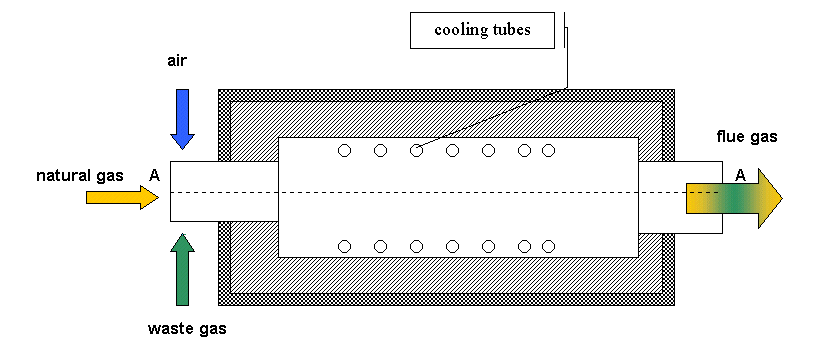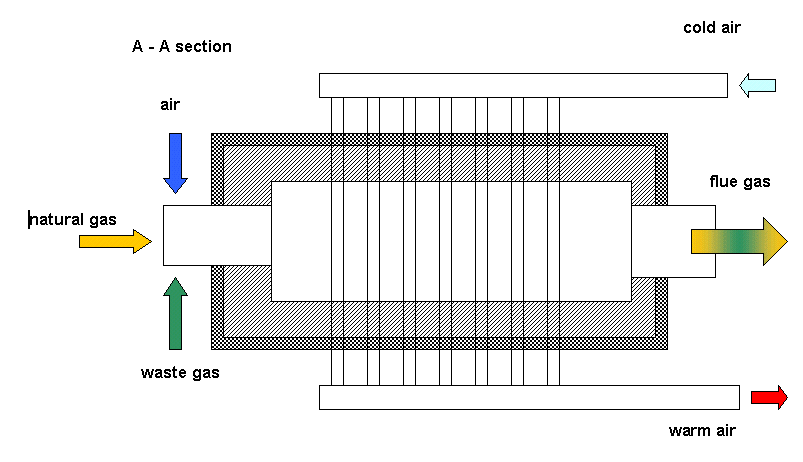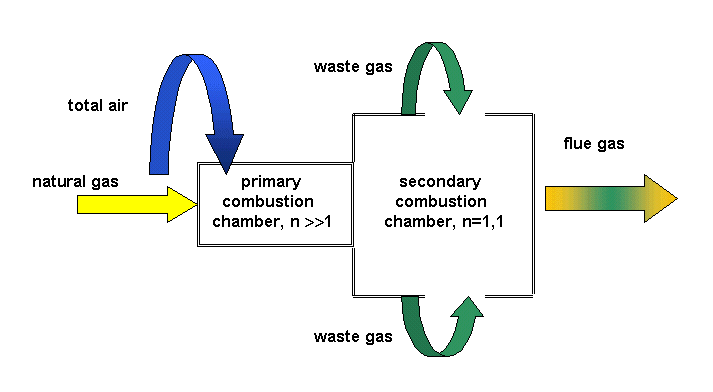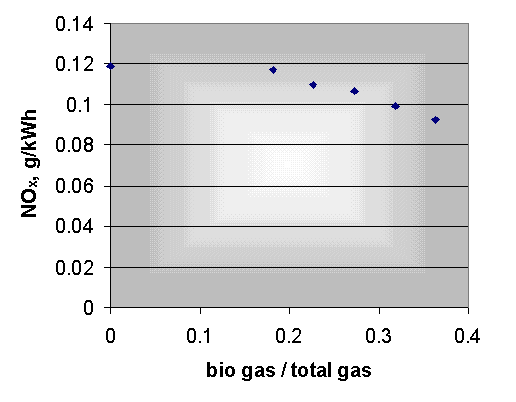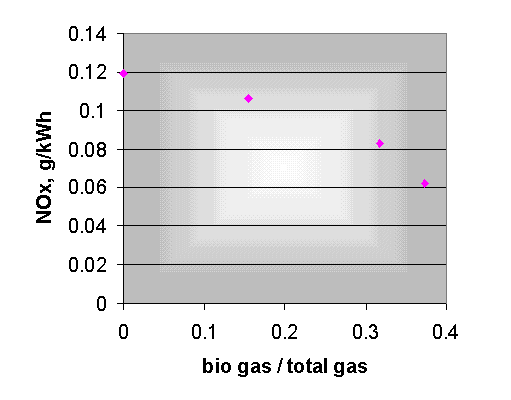|
The formation of polluting gas components at staged firing
Environment protectional tests have been done to find out to what extent
the amount of
gaseous pollutants found in the combustion products of natural gas changes
during the
energetics utilization of the chemical heat of high
At the Department of Combustion Technology of University of Miskolc research has been
carried out for several years now to clarify the theoretical basis of staged combustion. In this
work two-stage gas combustion has proved to be most useful in Our experiments have been carried out under two-stage combustion. During two-stage combustion all the combustion air was added to natural gas which yielded a primary combustion zone of high air factor and then the waste gas was led into the secondary combustion zone, the combustion with the final air factor came into being. For our research purposes a test furnace has been designed and built (Fig. 11 and Fig. 12). The test burner designed for our measurements was suitable for both normal and two-stage combustion. Fig. 13 shows the principle the two-stage test burner designed and produced for experimental purposes. It can be operated both in a traditional operational mode and with two-stage firing. Base of this burner is an high speed impulse burner.
Fig. 14 and 15 summarises the results of our measurements
done to specify the
|
|
